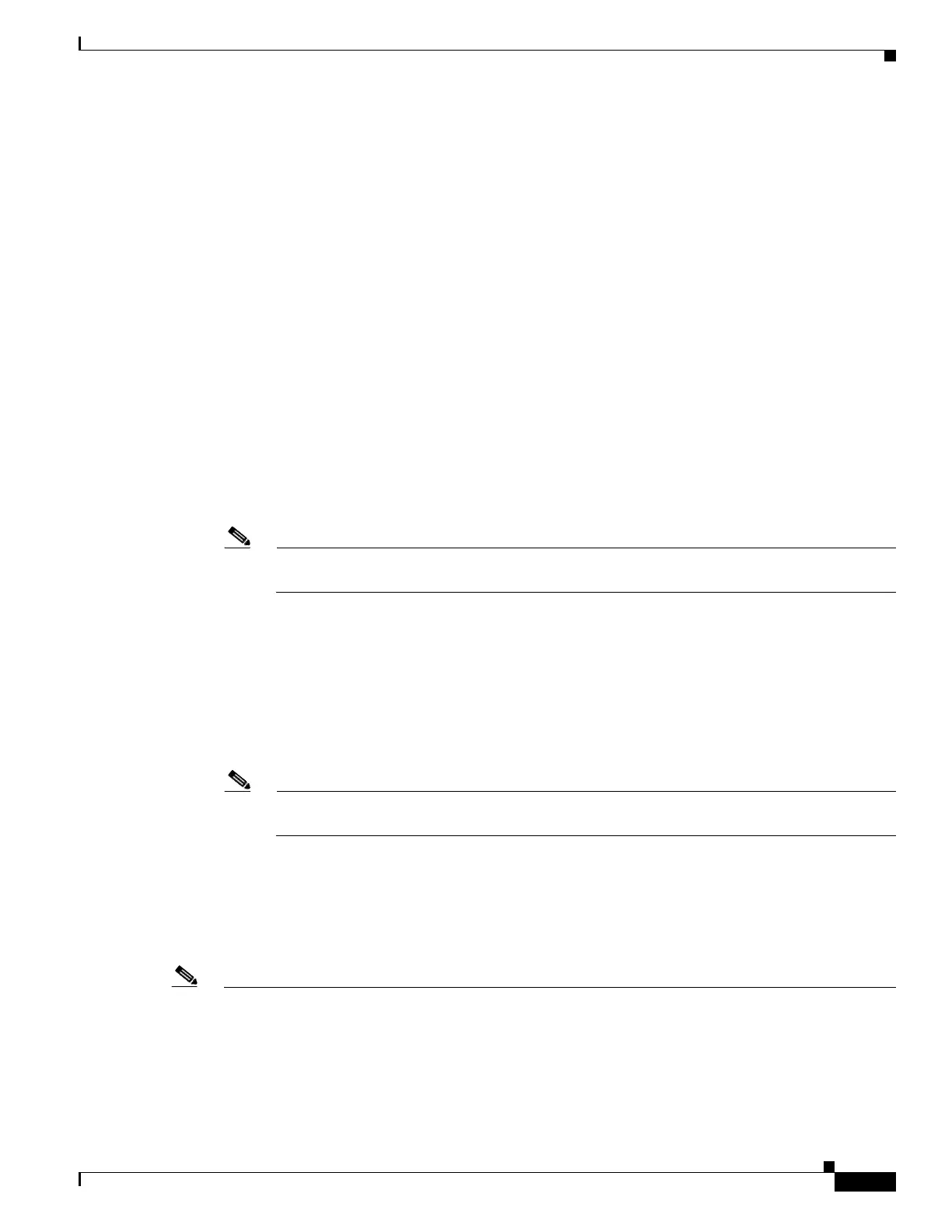15-51
Cisco ONS 15454 DWDM Reference Manual, R8.5
78-18343-02
Chapter 15 Management Network Connectivity
15.9.2 Configuring LMP
15.9.2 Configuring LMP
Configuring LMP consists of the following four topics:
• Control channel management
• TE link management
• Link connectivity verification
• Fault management
15.9.2.1 Control Channel Management
Control channel management establishes and maintains control channels between adjacent nodes.
Control channels use a Config message exchange and a fast keep-alive mechanism between the nodes.
The latter is required if lower-level mechanisms are not available to detect control-channel failures. A
maximum of four LMP control channels can be supported.
The nodes initially exchange configuration messages (Config, ConfigAck, and ConfigNack), which are
used to exchange identifiers and negotiate parameters for the keep-alive protocol. The nodes then
perform a continuous rapid exchange of Hello messages, which are used to monitor the health on the
channel.
Note The identifiers are Local Node Id, Remote Node Id, Local Control Channel Id, and Remote
Control Channel Id. The parameters are the HelloInterval and the HelloDeadInterval.
LMP out-of-fiber and LMP out-of-band control channels are supported and terminated on the shelf. An
out-of-fiber control channel includes using the control plane network (Ethernet) for the control channel
because Ethernet is separate from the fiber used for the data plane. An out-of-band control channel
includes using overhead bytes, such as the SDCC and LDCC bytes, for the control channel because
overhead bytes are separate from the payload. In-band means that the control messages are in the same
channel as the data messages; therefore, out-of-band refers to overhead bytes in the same fiber, separate
circuits dedicated to control messages in the same fiber (SONET/SDH circuits), or separate wavelengths
in the same fiber (DWDM).
Note Overhead bytes are SDCC or LDCC for SONET networks, RS-DCC or MS-DCC for SDH
networks, and GCC or OSC for DWDM networks.
Out-of-band implies in-fiber, but not in-band. In-fiber means that the control messages are in the same
fiber as the data messages, and includes both in-band and out-of-band. Out-of-fiber means that the
control messages take a path separate from the data plane. This includes separate fiber and Ethernet.
The control channel management for a peer node to OLS link is the same as that for a link between two
peer nodes.
Note The software supports gracefully taking a control channel down for administration purposes (refer to
Section 3.2.3 of the IETF LMP document). However, there is no provision for a graceful restart (refer to
Section 8 of RFC 4204).
• Graceful means that the nodes participating in the control channel agree that the link should go
down. To gracefully take down a control channel, the node sets the ControlChannelDown flag in its
messages to the other node until either the HelloDeadInterval expires or the other node sends a

